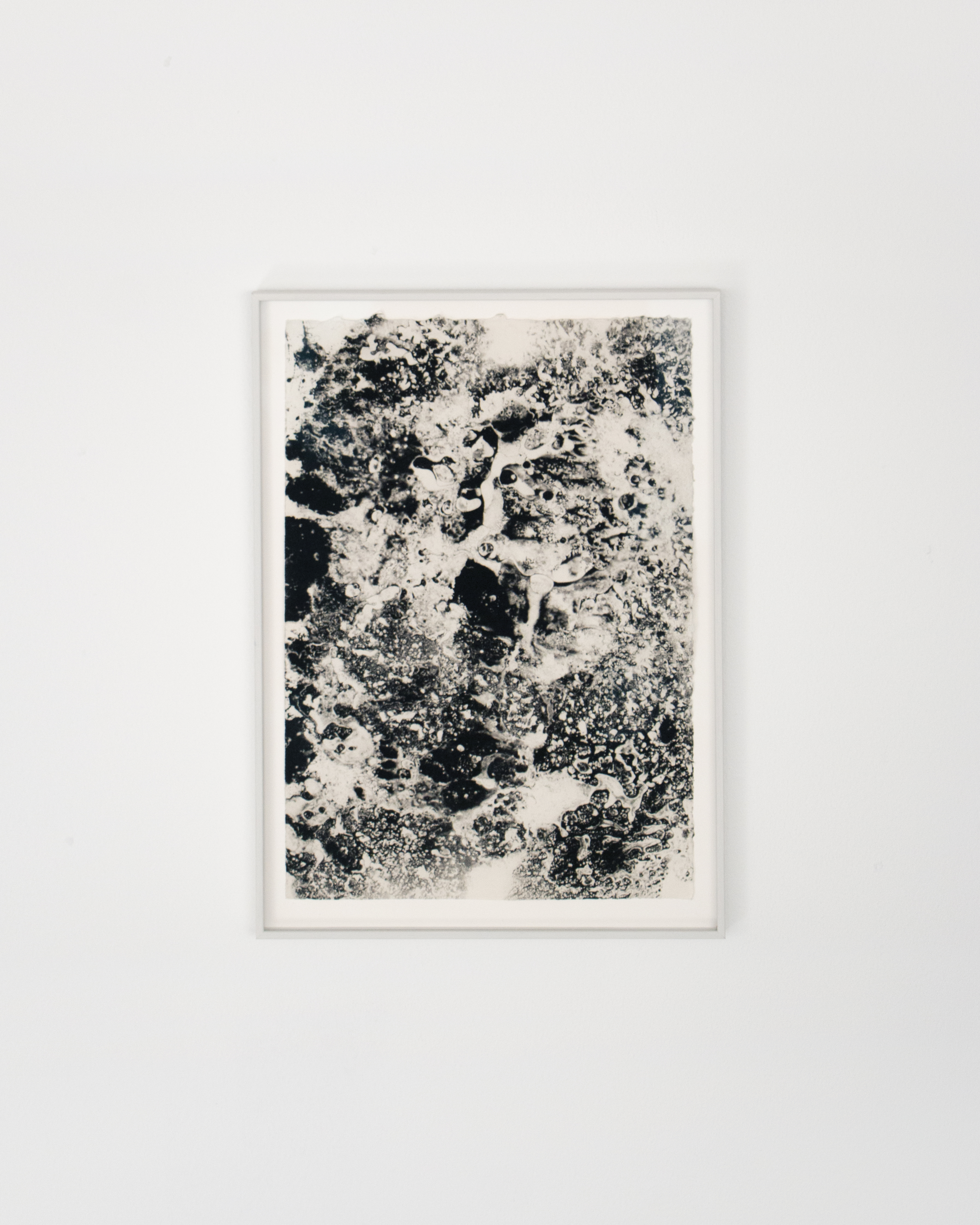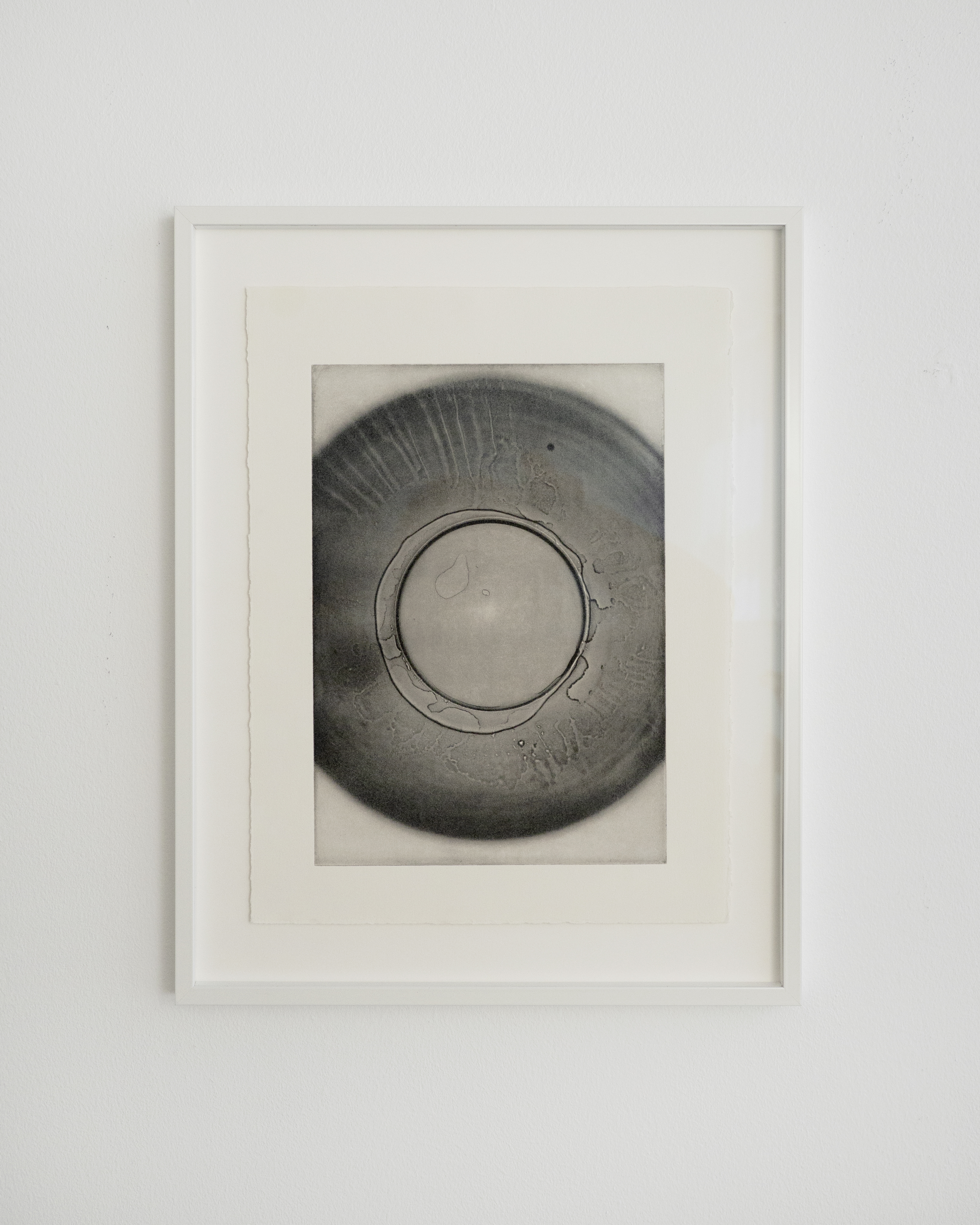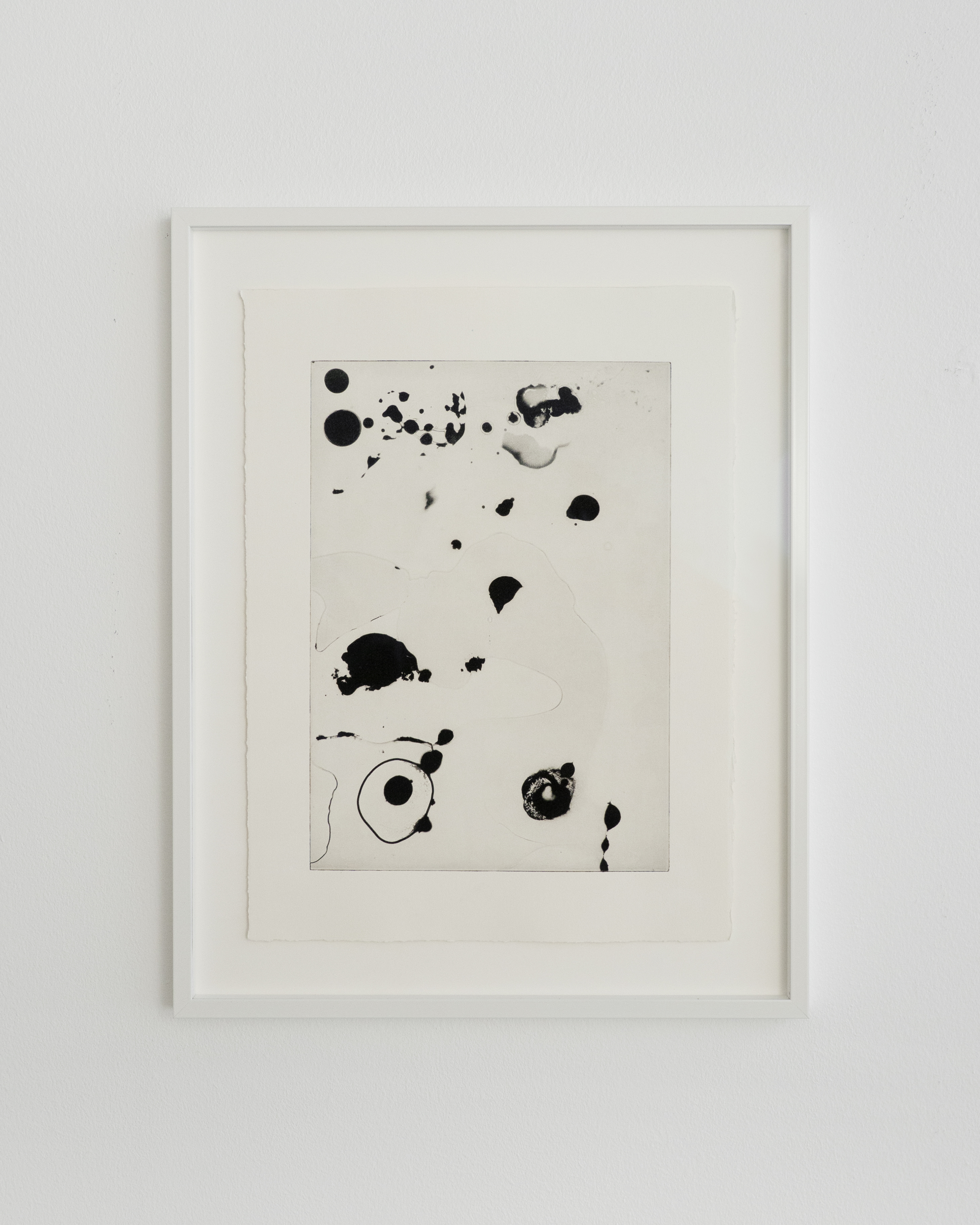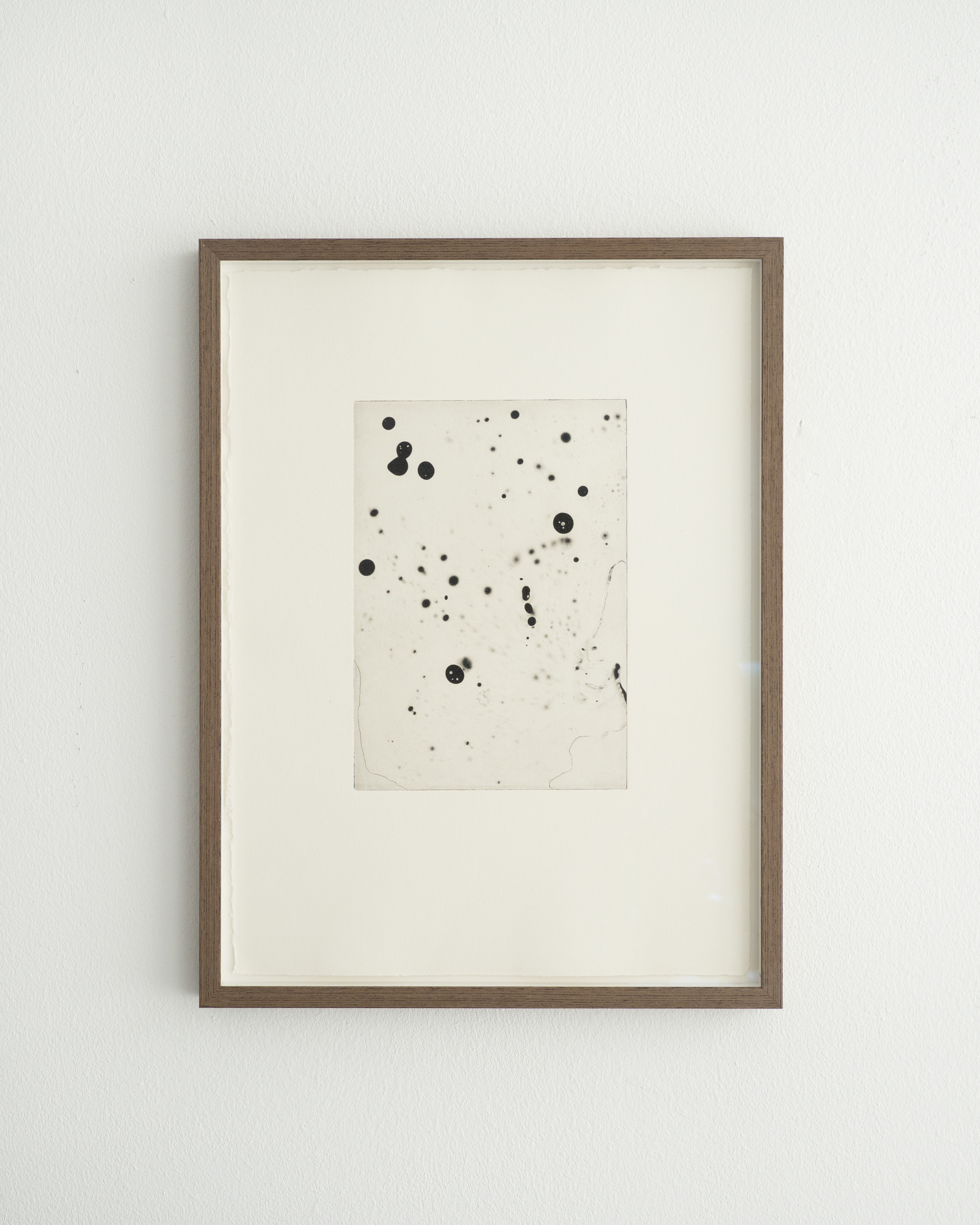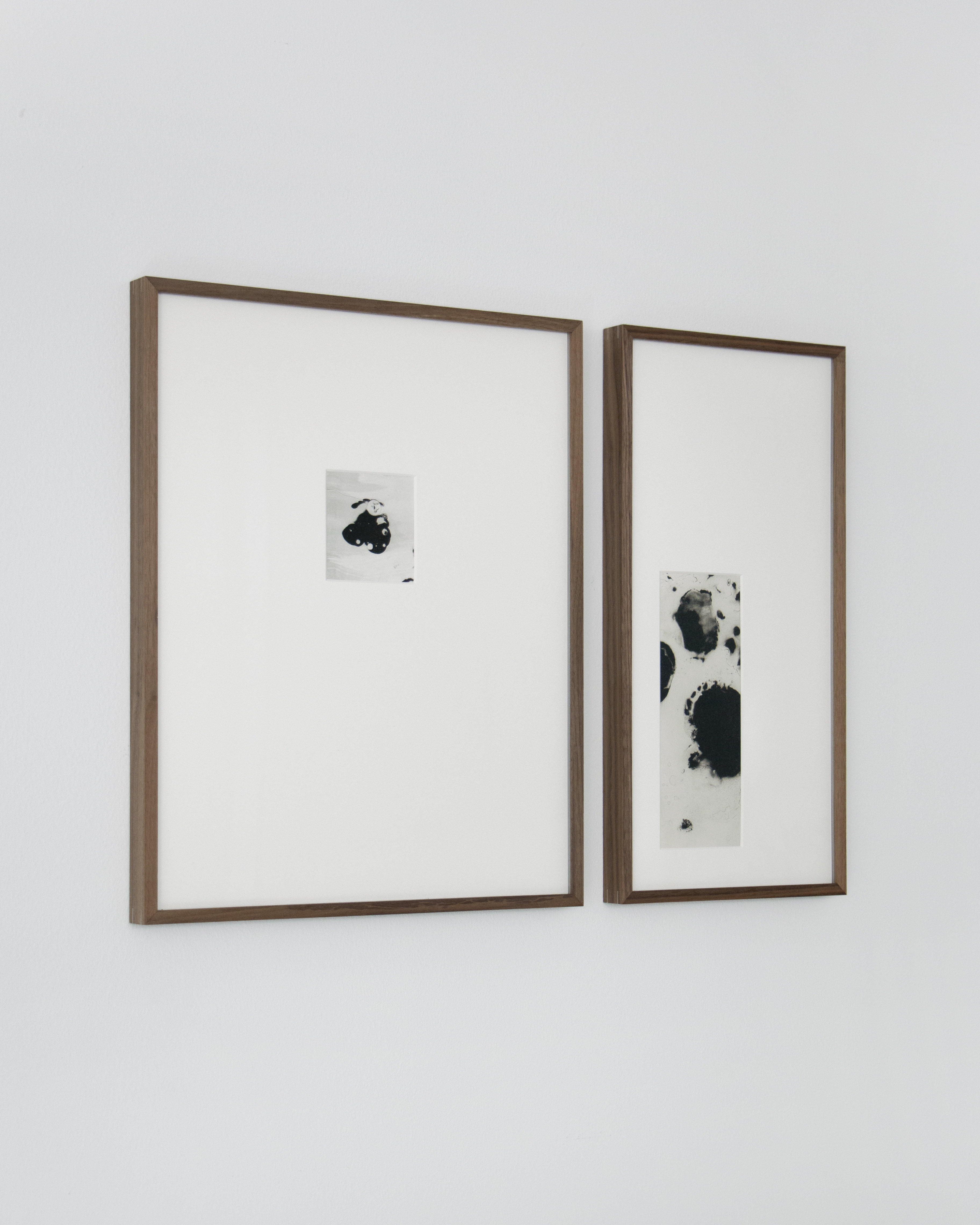
With ‘Trying to hold on to running water’ (2020) I’d like to pose photography as a medium of letting go rather than a way of holding onto something that once was. Not as a nostalgic desire for earlier times, but as a tribute to transience. Photographing means distancing, letting the photographed object be as it is without disturbing its own flow of movement. When trying to capture something so fluid and transparent as running water, there is no other way than to let it be as it is; containing it would take away its movement and make it something else. In that sense, photography is the only medium in which you can attempt to hold on to it while also letting it go, simply by letting it run and using time and light(sensitivity) as tools to show both its fluidity, shape and movement.
The beauty of the photo etching technique is the way in which you can photograph and engrave, or develop, at the same time - creating a very short line between what is captured and the captured image. By the long exposure that it needs to leave an imprint on the light sensitive plate, movement and transparency can be translated into both blurry shapes and sharp lines, as well as create depth in the final print. By shortening the exposure time, and by redirecting the light through a spatial transparent object (either glass or water itself), a mark is left on the plate in the form of a contrasting image, and transparency is translated into outlines and opacity. While the imprint on the light sensitive plate is a direct result of the captured materials, it is also a translation. Rather than capturing the objects by the reflection of light, light goes through it, making it a different approach to how photographic images come into being.
In this series I’ve used the same materials to capture and to reproduce the image, namely water, lanolin, linseed oil and pigments from burned bones. By using the same materials as a start and an end, I aim to create a more circular approach to my art practice.
The beauty of the photo etching technique is the way in which you can photograph and engrave, or develop, at the same time - creating a very short line between what is captured and the captured image. By the long exposure that it needs to leave an imprint on the light sensitive plate, movement and transparency can be translated into both blurry shapes and sharp lines, as well as create depth in the final print. By shortening the exposure time, and by redirecting the light through a spatial transparent object (either glass or water itself), a mark is left on the plate in the form of a contrasting image, and transparency is translated into outlines and opacity. While the imprint on the light sensitive plate is a direct result of the captured materials, it is also a translation. Rather than capturing the objects by the reflection of light, light goes through it, making it a different approach to how photographic images come into being.
In this series I’ve used the same materials to capture and to reproduce the image, namely water, lanolin, linseed oil and pigments from burned bones. By using the same materials as a start and an end, I aim to create a more circular approach to my art practice.
